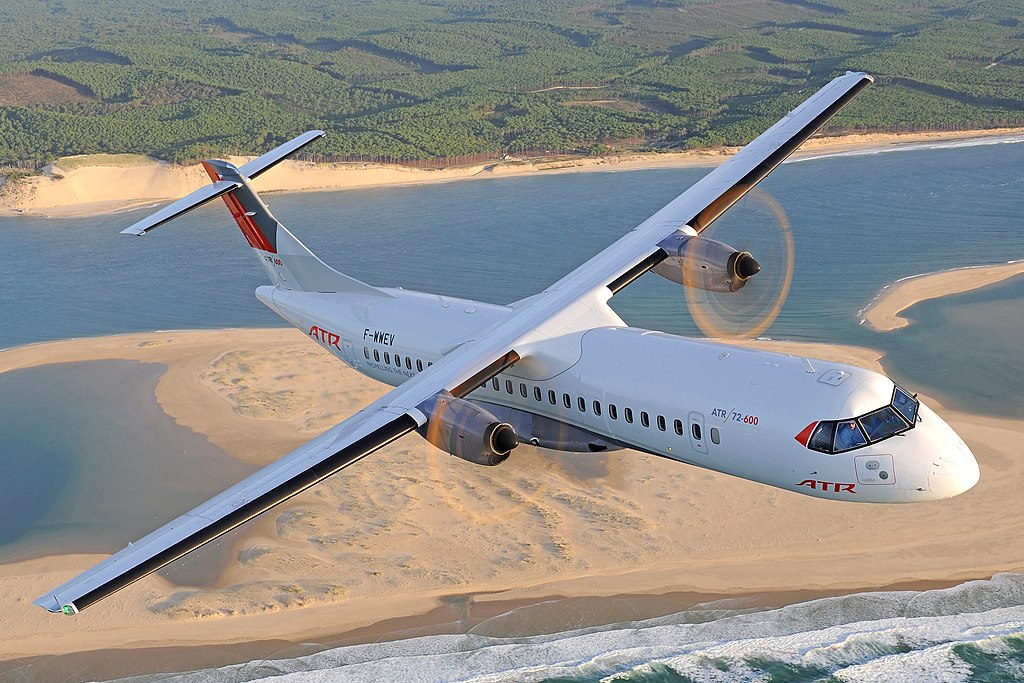ATR Forecasts U.S. Demand for 300 Turboprop Aircraft Amid Fleet Renewals

Turboprop manufacturer ATR believes U.S. regional air travel is at a pivotal moment. Presenting new data ahead of the RAA Leaders Conference, the Franco-Italian planemaker says the aging fleet of 50-seat regional jets is nearing retirement, and without a cost-effective replacement, dozens of smaller airports risk losing vital connectivity.
ATR says its analysis of historical and current networks, including a study by Seabury Airline Strategy Group, shows demand for roughly 300 new aircraft in the near future. “The U.S. regional market is at a crossroad,” said Alexis Vidal, Senior Vice President Commercial at ATR. “With 300 regional jets retiring and dozens of communities facing the real possibility of losing air service, this is about more than aircraft. It’s about reconnecting communities, giving them quick access to economic opportunities and offering airlines a proven, efficient way to open new routes profitably, even with fewer passengers.”
The company’s message comes as Texas-based JSX prepares to begin ATR operations later this year. The “hop-on jet” carrier plans to acquire four used ATR 42-600 turboprops to gauge passenger reaction to propeller-driven aircraft compared with regional jets, with a decision on a potential firm order expected by March 2026. ATR predicts many more U.S. airlines could follow suit as they seek lower costs and improved economics on thinner routes.
It’s important to note that for cost-sensitive regional airlines, the ATR 42 turboprop offers significant operating-cost savings over the Embraer E-145 thanks to its lower fuel consumption, cheaper maintenance, and simpler engine design—albeit at the expense of speed. The ATR 42 is best suited to short routes under two hours, where its cost advantages outweigh longer flight times. By contrast, the E-145’s higher cruise speed makes it more suitable for longer sectors, where its greater operating costs can be justified by faster travel and higher aircraft utilization. In practice, the ATR 42’s lower operating costs make it an economical choice for regional carriers serving short-haul routes with lower passenger demand, while the E-145, though more expensive to run, is a better fit for higher-density, longer routes where speed and utilization provide a competitive edge.
ATR produces the ATR 42 and ATR 72 families of turboprops, which are designed for short-haul regional routes and are known for exceptional fuel efficiency and low operating costs compared to regional jets. Their high-wing design, rugged landing gear and robust propellers allow them to operate reliably from shorter or even unpaved runways, maintaining essential connectivity to remote communities.
Both the ATR 42 and ATR 72 share a high degree of commonality—including the same fuselage cross-section, cockpit and systems—helping airlines minimize training and maintenance costs. The aircraft are also versatile, with variants for passenger transport, cargo, and specialized missions such as maritime patrol. While turboprops have historically produced more cabin noise and vibration than jets, modern ATR models feature redesigned cabins with advanced noise treatment for greater passenger comfort.
ATR is a joint venture between Airbus and Leonardo and has sold thousands of aircraft to hundreds of operators in more than 100 countries. With U.S. regional airlines under pressure from pilot shortages, cost inflation and the retirement of older regional jets, the company sees its modern turboprops as a timely solution to protect service to smaller markets and stimulate new route opportunities across the country.
Related News: https://airguide.info/?s=ATR
Sources: AirGuide Business airguide.info, bing.com, aviationbusinessnews.com
